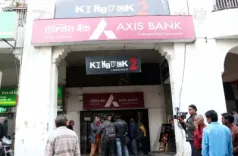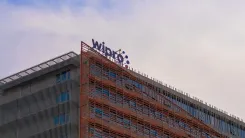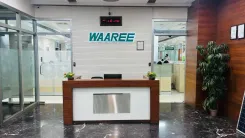Will Net Annual Office Leasing Reach an All-Time High of 50 MSF by 2026-27?

Synopsis
Key Takeaways
- Net leasing growth projected at 7-9% CAGR.
- Expected to cross 50 MSF by 2026-27.
- Supply predicted at 53-57 MSF annually.
- Occupancy rates improving, leading to better cash flows.
- Strong demand from BFSI and Global Capability Centres.
Mumbai, July 17 (NationPress) Net leasing of Grade A commercial office space in India is projected to achieve a robust Compound Annual Growth Rate (CAGR) of 7–9 percent over the next two financial years, surpassing the 50 Million Square Feet (MSF) milestone in the upcoming financial year, as per a report from Crisil Ratings released on Thursday.
In contrast, supply is anticipated to range between 53-57 MSF annually, which will contribute to a 6.5-7 percent CAGR growth in the total office stock during this period.
As a result, occupancy rates are projected to improve, enhancing cash flows for commercial office players. This improvement, along with prudent financial management, is expected to stabilize credit profiles, the report indicates.
The analysis is based on 78 commercial office entities, representing roughly one-fourth of the Grade A office stock in the nation.
Following an impressive recovery over the past two financial years, India's commercial office market is poised for a consistent net leasing growth in the medium term, fueled by a reduction in work-from-home policies and significant demand from Global Capability Centres (GCCs), according to the report.
GCCs remain a pivotal growth driver, benefiting from India's extensive, skilled talent pool and competitive costs. They currently account for 30-40 percent of annual net leasing activities across various sectors.
From a sectoral standpoint, net leasing growth over the next two fiscal years will be propelled by double-digit increases from the BFSI sector and companies providing flexible workspaces.
The BFSI sector's growth is driven by consistent credit expansion, rising assets under management, and workforce increases.
Operators in the flexible workspace sector will continue to thrive by offering agile, cost-efficient, and hybrid-friendly solutions, as noted in the report.
Conversely, growth in the IT/ITeS sector is expected to be modest, with net leasing rising by only 5-6 percent.
This increase will largely be driven by GCCs, given that net leasing by domestic IT/ITeS firms remains subdued, the report observes.
On the supply front, additions of commercial office space, which slightly decreased to around 47 MSF last fiscal year, are expected to rise to 53-55 MSF this fiscal year due to the completion of several ongoing projects.
Supply levels are projected to stabilize at 55-57 MSF in the following fiscal year, as developers adjust their plans in response to higher vacancies in specific micro-markets, according to the report.
Consequently, the total office stock is forecasted to grow to approximately 920-925 MSF by the conclusion of fiscal 2027, up from roughly 810 MSF as of March 2025.
Crisil Ratings director Gautam Shahi stated, “With robust demand absorbing the increased supply, the overall vacancy rate in India’s Grade A office market is projected to decrease to 15.5-16 percent by the end of fiscal 2027. This marks a 100 basis points (BPS) improvement compared to fiscal 2025. Although overall vacancy is expected to decline during this timeframe, trends will differ across micro-markets.”
Both the National Capital Region and the Mumbai Metropolitan Region, which together house about one-third of the commercial office inventory, are likely to observe a drop in vacancy rates by 200-250 BPS due to strong demand from the BFSI, flex, and IT/ITeS sectors.







